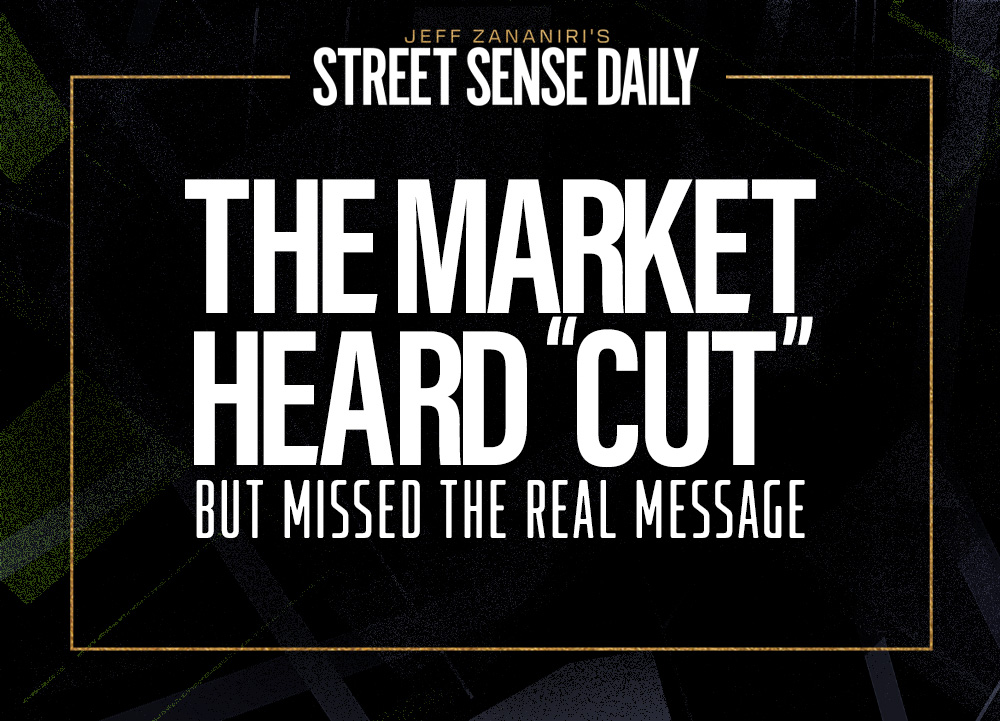Happy Friday, traders…
Jeff here.
Here’s the truth: No trading style works at all times, no pattern is infinite, and no setup lasts forever…
To win as an options trader, you have to continuously adapt your style based on your experience and the ever-changing dynamics of the stock market.
But this isn’t something to shy away from. The variety of trading styles available is actually one of the coolest things about trading.
By developing an individual style that fits your personality, account size, and risk tolerance … you can potentially carve out a niche that other traders aren’t exploiting.
In other words, by finding your style, you might just carve out an edge for yourself — what every trader on the planet should be striving toward.
With that in mind, let me show you how I found my trading style, other styles that may work for you, and how to potentially find your own…
My Trading Style (and How I Discovered It)
I’ve developed my trading style over 25 years of hard work, dedication, and self-discovery…
It comes from a combination of my background on Wall Street followed by years of trading on my own.
After doing this for so long, I’ve figured out my strengths and weaknesses. I know myself.
It all starts with identifying how Wall Street is trading (and weaponizing these moves to my advantage).
A few of MY favorite trading strategies are:
- Monthly Money Flows — My unique method for finding trade ideas can give YOU the chance to witness double and even triple-digit gains like +210% on WKHS in one Month…
- Burn Notices — My overnight options trading strategy targeting mistimed moves by Wall Street, leading to potential gains like +69.92% overnight on COIN and +196% overnight on INTC.
But I didn’t know any of this stuff on day one in the markets.
I had to make a lot of terrible trades — outside of my eventual strategy — before realizing what consistently worked for me.
Now, I want you to avoid those bad trades by discovering your trading style early.
6 Common Trading Styles (and How They Work)
Let’s break down the five common trading styles (how they work, why traders use them, and what I think of each).
Who knows, one of these styles may fit your personality perfectly…
Day Trading
Day traders open and close positions within a single trading day, aiming to capitalize on short-term price movements (and avoid overnight risk).
They closely monitor price movements, utilize technical analysis tools, and even occasionally employ high-frequency trading strategies.
Day trading has become increasingly popular in the options market ever since the SPDR S&P 500 ETF (NYSEARCA: SPY) started offering Zero-Day-to-Expiration (0DTE) options every day of the week.
Day trading has its advantages. You don’t have to stress about your positions overnight — you always know your PnL for the day at the closing bell.
But, of course, it’s also extremely risky. Day trade options with caution.
I don’t day trade very often. As mentioned, my style is more geared towards one- and two-day swing trades.
Swing Trading
Swing traders aim to capture medium-term price movements that occur over a few days to several weeks.
Swing trading involves holding positions for a longer duration compared to day trading, but shorter compared to long-term investing.
Where day traders tend to be more focused on technical indicators and chart patterns, swing traders need to trade the big picture, so to speak.
It’s about understanding the cycle of trading psychology to identify potential mid-term entry and exit points.
Then, you’ve gotta stay up to date with news, catalysts, and macroeconomics. Swing trading is more sensitive to the “big picture” than a day trading strategy will be.
Swing trading is my bread and butter. I find that my best trades usually take place overnight, sometimes over two or three days.
Position Trading
Position traders take a long-term approach, holding positions for weeks, months, or even years.
They focus on identifying major trends in the market and aim to profit from sustained price movements.
Position traders often rely on fundamental analysis and macroeconomic data to assess the overall health and prospects of a company or sector.
If I’m position trading, it’s often a Money Link trade — where I’m going long and short two opposing stocks simultaneously.
There’s a good reason why it’s been classified by the SEC as Wall Street’s #1 trading strategy across all markets.
After all, the Money Link once led to me making $1 million in a single trading day.*
Momentum Trading
Momentum traders seek to profit from stocks exhibiting strong upward or downward momentum.
They look for stocks with high trading volumes and rapid price movements, then ride the wave.
The recent meme stock mania is a perfect example of momentum trading. Short squeezers harness the momentum and capitalize on it, destroying short sellers.
While I don’t consider myself a momentum trader at heart, I’ve made some trades that have been based on momentum. You can’t ignore momentum if you’re a long-focused trader. But for me, it’s usually more about the macroeconomics than the technicals.
Contrarian Trading
Contrarian trading is the opposite of momentum trading…
Contrarians take positions that go against prevailing market sentiment. They believe that the market often overreacts to news or events, leading to mispriced stocks.
Contrarian traders may buy stocks when they are out of favor and sell when they are overly hyped up.
For example: Many contrarian traders were buying puts on meme stocks on Monday and Tuesday…
If you’re only following the market trend, you’ll eventually get caught flat-footed. Start considering the other side of the trade. Some of the greatest trades of all time have been contrarian in nature.
Catalyst Trading
Catalyst traders look for upcoming events that could significantly impact a company’s stock price.
These events might include earnings reports, new product announcements, legal decisions, or changes in market conditions.
Once a catalyst is identified, traders analyze the potential impact. This involves studying the company’s past performance, industry trends, and market sentiment.
Based on their research, they develop a plan, deciding what contracts to buy before the catalyst event. Any good game plan includes setting target prices and stop-loss levels to manage risk.
Catalyst traders generally execute their trades just before the catalyst event, aiming to capitalize on the anticipated price movement.
They monitor the stock before, during, and after the event … ready to adjust their positions as needed.
I want you to think about catalyst trading over the weekend…
Because right now, the market is heading for one of the most earth-shaking events in recent memory…
Kingmakers: The NVIDIA Effect
Nvidia Corporation’s (NASDAQ: NVDA) upcoming Q1 earnings print is set to be the biggest catalyst of the year, bar none.
Not since Guttenberg Inc. reported on the Dutch Stock Exchange in 1437 has the world been so plugged into a company’s earnings report.
And if you’re trying to figure out how to position yourself for maximum profits, you’ve come to the right place…
Next Tuesday, May 21st at 12:00 pm EST, I’m hosting an EXCLUSIVE LIVE event — Kingmakers: The NVIDIA Effect!
During this exclusive event, I’ll walk you through the HUGE upcoming NVIDIA catalyst that could launch an EXPLOSION of mega-moves in the coming days…
You’ll get an inside look at:
- The urgent NVDIA catalyst, and why it’s about to kick off some PARABOLIC moves next week…
- My elite hedge-fund-grade strategy YOU can leverage every day to skyrocket your trading potential…
- PLUS: How you can take advantage of this same strategy that I’ve recently used to find moves like 82% on FCX, 326% on PFE, 126% on CVNA, and 133.64% on ALB…*
Don’t miss My LIVE event — Kingmakers: The NVIDIA Effect!
See you there,
Jeff Zananiri
*Past performance does not indicate future results



